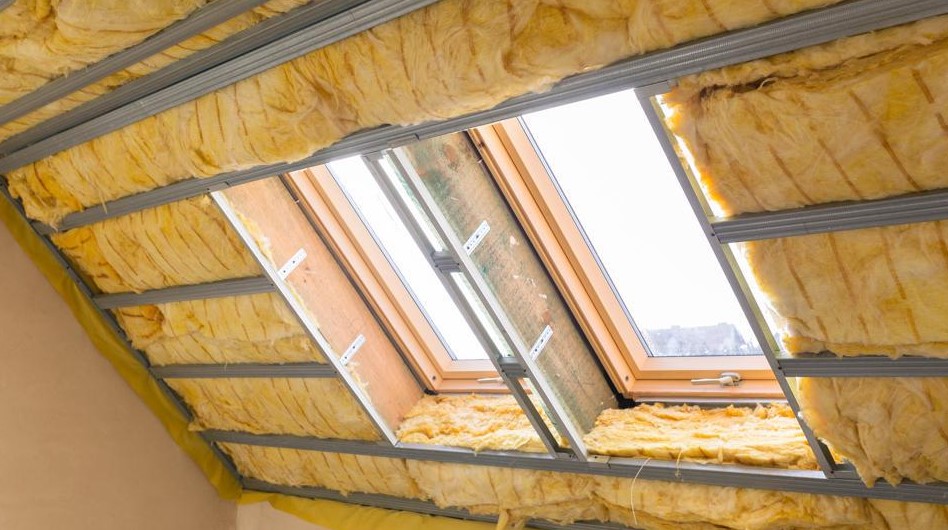
Getting proper insulation for your house in winter is essential. Insulation keeps heat in during the winter and reduces heat flow into your house during the summer. A properly insulated home will be warmer in the winter and cooler in the summer, offering a more comfortable environment for you and your family all year while also assisting you in saving money on your energy bill!
Three variables must be considered when determining the sort of insulation to utilize in your home: material, type, and location/application. There are four basic types, each with its own set of benefits and drawbacks.
Insulation blankets
The most popular kind of insulation is blanket insulation, which comes in batts or rolls. Batts and rolls come in a variety of widths and thicknesses. Fiberglass is the most frequent material used in blanket insulation. A facing is placed to several types of blanket insulation to provide an air and/or vapor barrier. Kraft paper, vinyl sheeting, and aluminum foil are all common facing materials.
The fact that a homeowner may install the batts themselves is the major selling factor for blanket insulation. Installing blanket insulation can be a quick and simple operation, depending on your home insulation project, but there are a few things to keep in mind. The most significant disadvantage of installing blanket insulation oneself is the necessity for protection against microscopic fiberglass particles. Wear a mask and something to protect your skin and clothing from the small fiberglass fibers that can be hazardous if they go into your lungs and irritate your skin when installing blanket insulation.
Installing blanket insulation in a non-uniform environment might be problematic. It can take a long time to wrap blanket insulation over wiring and piping, and it can also diminish the insulation’s efficiency. Unfinished walls (including foundation walls), floors, and ceilings are the greatest places to apply this sort of insulation.
Insulation Using Spray Foam
Liquid foam insulation materials are often used in spray foam insulation. The most popular method is to spray liquid foam insulation, although it can also be injected, poured, or foamed in situ. Polyurethane is the most frequent substance used in spray foam insulation. Spray foam insulation is more expensive to install than blanket insulation. The greater R-value (a measure of insulation’s capacity to restrict the rate of heat transfer) associated with sprayed in foam, on the other hand, can minimize weatherizing expenses and save you money throughout the insulation’s lifetime.
Spray foam insulation’s major selling feature is that it fits into cracks, fissures, and gaps in the installation cavity or area. This helps prevent moisture accumulation (which reduces mold and mildew), makes it tough for bugs to locate a home in your home, and won’t move, settle, or fall out of place after it’s cured.
The most significant disadvantage of spray foam is its installation. Spray foam insulation is normally installed by a professional. If you do it yourself and apply the spray foam incorrectly, it will need considerable cleanup and jeopardize the structural stability of your property. Other methods of insulation are more costly than spray foam insulation. Spray foam insulation is ideal for insulating completed spaces, obstacles, unfinished attic floors, and enclosed existing walls.
Insulation made of rigid foam
Rigid foam insulation (sometimes called rigid panels) may be utilized to insulate almost any part of your home. Rigid foam is more expensive and more difficult to install than blanket insulation in terms of cost per R-value. The fundamental benefit of rigid foam insulation is its high R-value for its small thickness. Rigid foam insulation provides continuous covering and an air and moisture barrier that blanket insulation cannot. Spray foam is more difficult to install than stiff foam. With a knife, the rigid foam may be readily cut to size. The inflexibility of stiff foam is its major flaw. It’s tough to install in tiny or irregular spaces because of its stiffness. It works best in unfinished walls, floors, ceilings, and low-slope roofs that aren’t vented.
Insulation with loose-fill
Small fiber, foam, or other materials are used to make loose-fill insulation. Loose-fill insulation, like spray foam, conforms to the installation area. Cellulose, fiberglass, and mineral wool are the most frequent materials utilized.
Loose-fill insulation has the benefit of being able to be put in unevenly shaped regions and voids. It’s one of the few insulation kinds that can be fitted with minimal disruption to existing finishes. The most significant disadvantage is that it has a propensity to settle with time, resulting in a drop in R-value. Another disadvantage is the weight. Too much loose-fill insulation can cause the drywall to slump.
Because each region of the country has a unique climate, make sure to seek guidance from a local insulation specialist. Consider the experience of an insulation specialist while making your decision. They’ll be able to provide you with advice on your project and what will be the most beneficial to your property in the long run.

